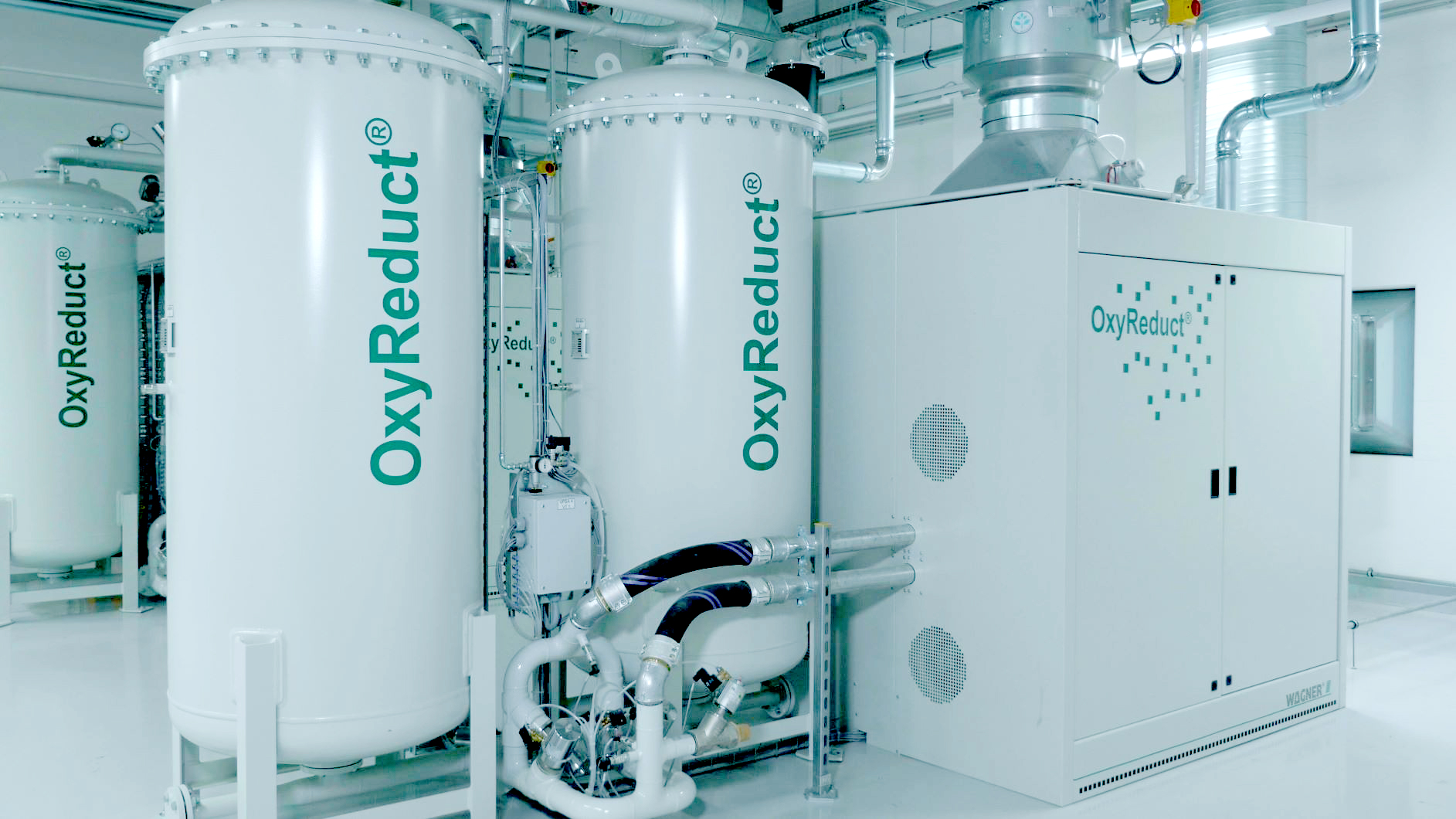An Oxygen Reduction Fire Prevention System (ORFPS) is an advanced fire prevention technology designed to prevent fires by maintaining an environment where the oxygen concentration is reduced to a level that prevents combustion but is still safe for human occupancy. This system is particularly effective in environments where traditional fire suppression methods may not be suitable, such as data centers, archives, museums, and cold storage facilities.
How Oxygen Reduction Fire Prevention Systems Work
- Principle of Operation:
- Oxygen Levels: Fire requires three elements to ignite and sustain: heat, fuel, and oxygen (the fire triangle). An ORFPS works by continuously reducing the oxygen concentration in the protected environment to a level below what is needed to sustain a fire. Typically, oxygen levels are reduced from the normal 21% to around 14-15%, depending on the materials present and specific requirements.
- Safe for Humans: These reduced oxygen levels are carefully controlled to remain above the threshold that is safe for humans, allowing personnel to work in the space without respiratory protection.
- Nitrogen Enrichment:
- Nitrogen Generation: The system typically works by introducing nitrogen into the environment. Nitrogen, being an inert gas, dilutes the oxygen concentration without supporting combustion. Nitrogen is generated on-site, often using nitrogen generators that separate nitrogen from the ambient air.
- Constant Monitoring: The oxygen level in the environment is constantly monitored and controlled to ensure it remains at the desired level. If the oxygen level rises, the system automatically increases the nitrogen supply to bring it back down.
- Applications:
- Data Centers: Protects sensitive electronic equipment from fire without the need for water-based suppression, which could cause significant damage.
- Archives and Museums: Protects irreplaceable documents, artifacts, and works of art by preventing fires from starting in the first place.
- Cold Storage Facilities: Ideal for environments where freezing temperatures make traditional water-based fire suppression systems challenging or where the materials stored are highly flammable.
- Benefits of ORFPS:
- Prevention Rather Than Suppression: Unlike traditional fire suppression systems that activate after a fire has started, an ORFPS prevents fires from occurring at all by eliminating the necessary oxygen for combustion.
- No Residual Damage: Since the system does not use water, foam, or chemical agents, there is no risk of damage to sensitive equipment or valuable items from the suppression medium.
- Continuous Protection: The system provides 24/7 protection, constantly maintaining a fire-preventive environment.
- Environmentally Friendly: Nitrogen is a natural, abundant, and environmentally friendly gas. The system’s operation does not involve the use of harmful chemicals.
- System Components:
- Nitrogen Generators: These are the heart of the system, producing nitrogen on-site to maintain the desired oxygen concentration.
- Oxygen Sensors: Strategically placed throughout the protected area to continuously monitor oxygen levels and provide feedback to the system’s control unit.
- Control Unit: Manages the operation of the nitrogen generators and adjusts the nitrogen flow based on the readings from the oxygen sensors.
- Safety Considerations:
- Human Occupancy: The system is designed to maintain oxygen levels that are safe for human occupancy, generally between 14-15% oxygen concentration. However, personnel working in these areas should be trained on the system’s operation and safety protocols.
- Emergency Overrides: In case of an emergency, such as a medical situation requiring higher oxygen levels, the system can be overridden to restore normal oxygen levels.
- Maintenance and Monitoring:
- Regular Maintenance: The system requires regular maintenance to ensure that the nitrogen generators and oxygen sensors are functioning correctly.
- Remote Monitoring: Many ORFPS are equipped with remote monitoring capabilities, allowing facility managers to oversee system performance and receive alerts in real-time.
Limitations and Considerations
- Initial Cost: The installation of an ORFPS can be more expensive than traditional fire suppression systems due to the need for specialized equipment and infrastructure.
- Ongoing Operating Costs: The system requires continuous operation, which may lead to higher energy and maintenance costs.
- Suitability: Not suitable for all environments, particularly where oxygen-sensitive processes or individuals with certain health conditions are present.
An Oxygen Reduction Fire Prevention System offers a proactive approach to fire safety by creating an environment that prevents fires from starting, making it a valuable solution for high-risk or high-value environments where fire prevention is critical.


Leave a Reply